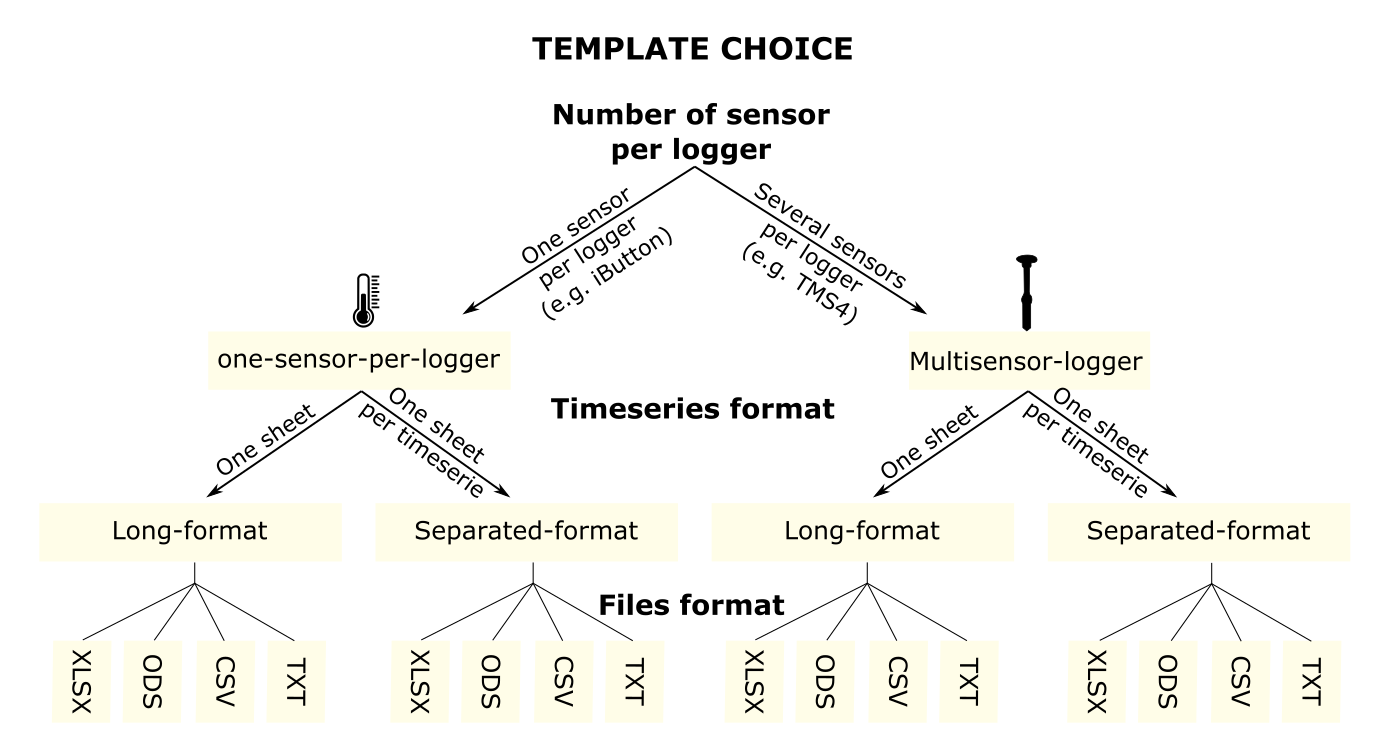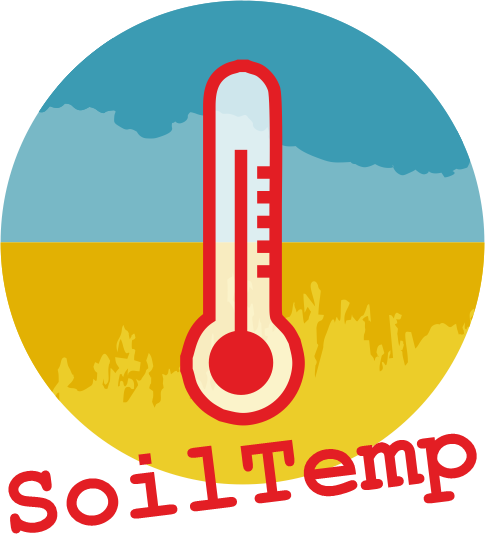How to submit data
We now closed the global call for our upcoming open-access database publication. However, new submissions are always welcome and will be incorporated in future updates of the database! So don’t hesitate to get in touch and submit your data.
Your data is eligible if you:
1) have georeferenced microclimate time series of >1 month with maximum a 4-hour interval. We accept observational and experimental data, from above– and belowground, for temperature, moisture and any other microclimate parameter.
2) optionally have associated species (plants or other taxa) composition or trait data from the same location. (These will not yet been published open access, but will be very useful for ongoing projects)
You can submit data in different formats. To make your submission easier, we prepared different templates, depending if you have:
1) loggers with one sensor (e.g. iButton) or multiple sensors (e.g. TMS4),
2) want to submit all your timeseries in long format underneat each other, or in separate sheets (e.g. TMS4 data)
3) want to submit as .xlsx, .ods, .csv or .txt.
You can download your favourite submission format as a .zip-file here:
One sensor – one sheet (.xlsx, .ods, .csv, .txt)
One sensor – separate sheets (.xlsx, .ods, .csv, .txt)
Multiple sensors – one sheet (.xlsx, .ods, .csv, .txt)
Multiple sensors – separate sheets (.xlsx, .ods, .csv, .txt)
Check a visual selection scheme below, and see below for video instructions and a FAQ:

Frequently asked questions
Where to send my data?
Data should be submitted to soiltemp.project@gmail.com, directly or as for example a WeTransfer.
Should I resubmit data that I already submitted, in the new format?
No, we have a workflow in place to convert old data into the new format. If you are adding new data to time series you submitted earlier, you can include the old data again, if that’s convenient for you.
I have vegetation data, but it would need more time to format it. Should I wait with submitting?
No! You can submit your microclimate data now and revisit the vegetation data later.
My data is part of another global network, should I submit it separately?
We suggest you get in touch with your network leadership and see if they can submit all data at once. All individual network members can still opt in for co-authorship. If this is not feasible, you can submit separately.
Do you also want air temperature data?
Yes! While we’re still called ‘SoilTemp’, we now include all types of microclimate data. Air temperature data, near the surface or for example from vertical gradients in forest canopies, all is welcome!
I have calibrated my data, what should I submit?
We need at least the raw data. You are encouraged to submit the calibrated data as a separate time series (i.e., a new row in the metadata file).
What to do with outliers?
If the data is clearly wrong, replace it by NAs. If it needs to be used with caution, use the ‘comment’-boxes in the metadata file. We will run a standardized protocol to flag suspicious data on our side.
What is the minimum amount of data to be included in the database?
One sensor, which recorded for at least one consecutive month, with a time interval of 4 hours or less between measurements.
Is there an efficient way to clean raw microclimate data?
There is now an R-package called myClim that helps you processing microclimate time series. It’s especially useful for TOMST TMS4-loggers, but handles data from many common logger types. You can find it here:
What is SoilTemp’s data sharing and usage policy?
For data that is used prior to the publication of the database, all data owners will get an invitation to co-author the paper. The main paper that ALL data owners will be on, will be the SoilTemp database publication itself. After that, users of the database will simply cite it, yet we will encourage users to still get in touch with owners and – if a significant part of their project – invite them to co-author. We will also implement a DOI-system similar to that of GBIF: your dataset will get its own DOI, and each data download will get a DOI they need to cite, which refers directly back to the DOIs of individual datasets in there.
If you do not want your data to be published open access, it can remain available upon request within the SoilTemp database. This will reduce its usage potential, of course. You can specify your preferences in the ‘creative commons’-column in the metadata file.
For our full data sharing and usage policies, download the latest rulebook.
Will vegetation data be published together with the microclimate data?
No, we will for now only publish the microclimate data and associated metadata – for those who agreed with publication. Vegetation data will for the forseeable future be kept in the database for internal usage only.
When will the database be published?
We are aiming for a first draft of the database paper by the end of 2023, to be shared with all co-authors, and will move forward as quickly as possible from there.
What if I can’t make the deadline of October 20th?
Don’t worry too much if you don’t make that deadline, after publication we aim to turn the database into a dynamic one, continuously welcoming submissions, with a system to provide credit to data owners whenever data gets used (download the latest rulebook for more information).
